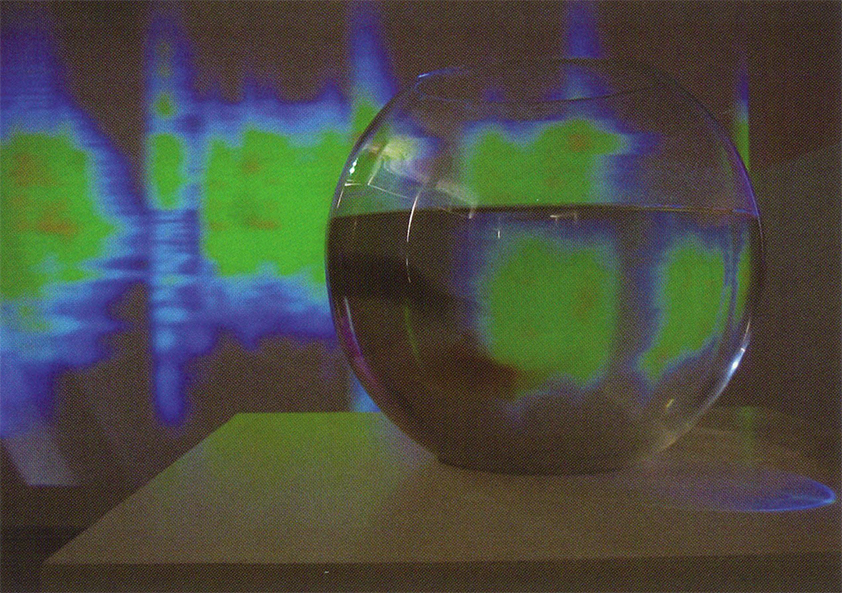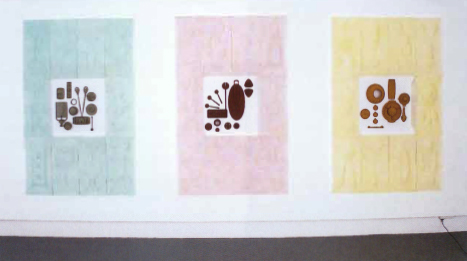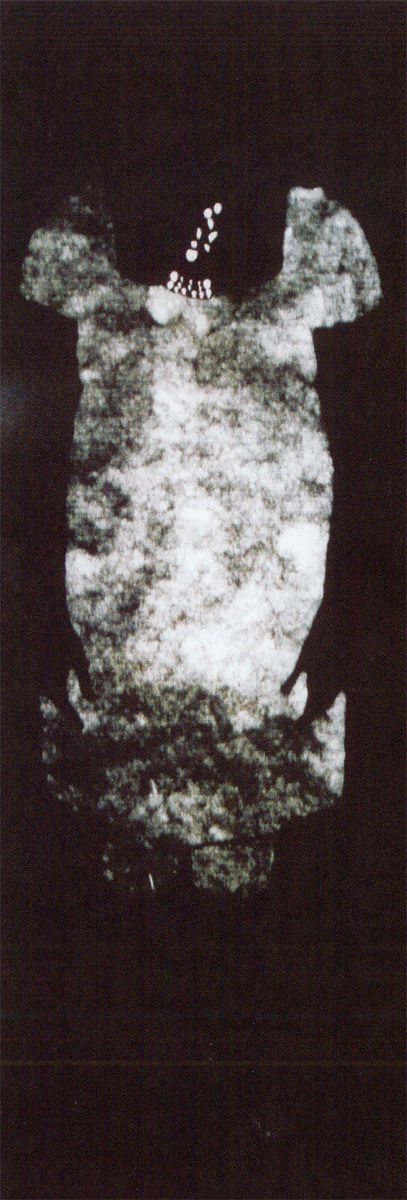
In its new location at Southbank, across the river from Brisbane's CBD, Griffith University's Queensland College of Art redefines its profile within the local arts scene. The new studios open out to a classic river view and there is a strong sense that the campus is 'facing up' to the city to which it belongs. The campus blends into the cruisey Southbank ambience but at the same time it maintains itself as a cultural enclosure – or perhaps a cultural counterbalance. This year's exhibition of graduating Fine Arts and Photography students is titled Counterbalance, and could not be more appropriately named.
It is interesting that this shifting sense of belonging to and taking distance from the flow of everyday life also runs through much of the art that is exhibited in this year's show. There are some predictable post-Lord of the Rings themes and the ever-present angst-ridden body parts, but there is also a very strong representation of artists who are negotiating the difficult terrain of 'influence'. How to learn from your peers but not become your peers?
One of the most intriguing artworks resonating around this notion of influence is a painting installation by Natalie Masters titled Feltit. The title responds to the material substance of the artwork (black felt), whilst also embodying the 'felt' meaning that inspired the art. The installation is a syntax of dress with six panels of one and a half metre deep black felt hung diagonally across the corner of a room. Dress is a significant identity metaphor in the visual arts these days but Masters brings a special subtlety to the theme with her technique of scraping or paring away the felt until it is almost torn through. Each panel presents an image of a dress moulded by body gestures with shoes positioned to emphasise the living quality of the dress. Human moods are revealed by the folds and fall of the fabric and the way it wraps around the body as it turns.

Masters has a Maori heritage and incorporates this into her dress pictures with an element of tattoo-like patterns cut cleanly into the felt. The patterns read alternatively as jewellery, embroidery or tattoos and are deceptively brilliant in their effect. One is forced to go close to decide whether they are painted on or cut through. The really intriguing aspect of Master's technique is the way she coaxes felt into a language similar to watercolour, and there is no argument whatsoever that these panels of shredded felt are anything but painting.
Andrew Rewald is another artist in the show who redefines the status of painting by way of his technique. Rewald is a chef in his other life and uses Chux-brand cloths that are stiffened into shape around arranged moulds of kitchen utensils. These moulded 'chux-boards' frame a central abstract arrangement of kitchen utensils covered in a powdered coating that matches the colour scheme of the chux. The four different colours of Chux determine the colour scheme of what amounts to four deep relief still life panels titled Made in Elseware. Sounds 'kitch-y' (excuse the pun), but the artwork actually has the sense of a deliberate move away from the esoteric distance of synthetic cubism towards a more personalised abstraction as narrative. It works.
Intermedia is also well represented in the exhibition by a mixed media installation by Janice Kuczkowski – Untitled (little girl). The dress metaphor reappears in this work as an exquisite coloured projection of a child's dress that flickers through a screen of calico partitioning. The installation is a series of three rooms with video projections in each. A girl runs quickly across a room in the first accompanied by the sound of running and laughter while a toy hobby horse rocks away in the second. The third room has a monitor from which the pixellated image of the dress originates. There is a neat sense of circularity in this scheme where the last room casts you back into the first, but what is particularly pleasurable is the experience of memory invoked by the installation. You can somehow feel childhood in the air, and it is terrific.
One other aspect of the exhibition worthy of particular mention is the printmaking. Meggan Dawson, Juul Rameau and Amy Wilson all exhibit an exceptional professionalism in terms of their craftsmanship, but they also combine this skill with a high degree of innovation in expanding the parameters of the genre. Their installations combine printmaking with drawing, sculpture and the found object and together make a very interesting interlude concerning space and perspective. The city of Brisbane looks forward to more 'counterbalance' from these fine young artists.













